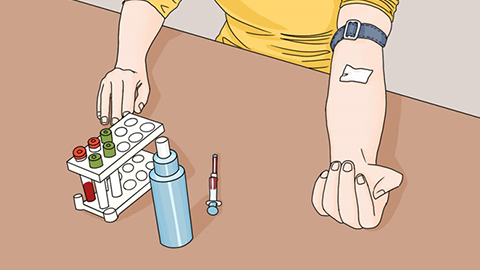What is the typical blood picture of aplastic anemia?
In general, as a type of bone marrow failure syndrome, aplastic anemia is typically characterized in peripheral blood by abnormalities in the red blood cell system, white blood cell system, platelet system, reduced reticulocyte count, and absence of abnormal cellular components. The details are as follows:

1. Red blood cell system abnormalities: Both red blood cell count and hemoglobin concentration are decreased, usually presenting as normocytic normochromic anemia—meaning mean corpuscular volume (MCV), mean corpuscular hemoglobin (MCH), and mean corpuscular hemoglobin concentration (MCHC) remain within normal ranges, without significant anisocytosis or chromatic abnormalities. Only a simple reduction in cell numbers is observed.
2. White blood cell system abnormalities: White blood cell count is significantly reduced, with the most notable decrease in both proportion and absolute value of neutrophils, while lymphocyte proportion is relatively increased. Peripheral blood smear examination shows few neutrophils, but commonly reveals lymphocytes and a small number of monocytes. No blast cells or immature cells are present.
3. Platelet system abnormalities: Platelet count is severely reduced, and platelets tend to be small in size, although their morphology is mostly normal. Due to insufficient platelet numbers, patients are prone to manifestations of coagulation dysfunction, such as petechiae and ecchymoses on skin and mucous membranes; however, no abnormal platelet morphology is seen in peripheral blood.
4. Reduced reticulocyte count: Reticulocytes are immature red blood cells, and their count reflects bone marrow hematopoietic activity. In patients with aplastic anemia, reticulocyte count is markedly decreased, often below 0.5% and sometimes nearly zero, indicating failure of erythropoiesis in the bone marrow.
5. Absence of abnormal cellular components: Peripheral blood smear examination reveals no abnormal cells other than the aforementioned quantitative and proportional changes—such as parasites, schistocytes (fragmented red blood cells), or leukemia cells—helping differentiate aplastic anemia from other hematologic disorders that cause abnormal blood findings.
Patients should take daily precautions to avoid trauma-induced bleeding and minimize visits to crowded places to prevent infections. Diet-wise, they may moderately increase intake of foods rich in iron, protein, and vitamins. Additionally, it is essential to strictly follow medical advice regarding treatments such as immunosuppressive therapy and hematopoietic stem cell transplantation, and to undergo regular blood tests for monitoring disease progression.




